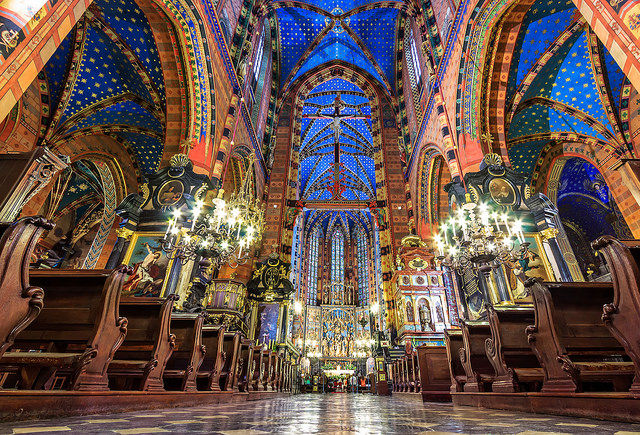The Wawel Cathedral and St. Mary's Basilica
- beatitudeswyd
- Mar 25, 2016
- 2 min read
The two most important churches in Krakow - the cathedral and the basilica - will undoubtedly be places you'll want to visit while in the city for World Youth Day. Not only are they amazing architectural achievements and beautiful tributes to our faith, but they played important roles in the life of John Paul II, the patron of this World Youth Day.
Wawel Cathedral

The Wawel Cathedral, or Katedra Wawelska in Polish or the Royal Archcathedral Basilica of Saints Stanislaus and Wenceslaus on the Wawel Hill, if you want to be really thorough, was built over 900 years ago. It has traditionally served as the coronation site of Polish monarchs as well as the home parish for the archbishop of Krakow. Fr. Karol, later to be Pope John Paul II, was ordained there on November 1st, 1946, and celebrated his first mass there the following day. As archbishop of Krakow, this was his main church, although he spent much of his time celebrating mass at smaller local parishes.

The Wawel Cathedral was actually constructed three times: in the 11th century (then destroyed), in the 12th century (then destroyed by a fire in 1305), and the current structure built in the 14th century. Although it is considered a Gothic cathedral, its art also includes Renaissance, Baroque, Classicist, and Modern styles. St. Stanislav, an 11th century martyr and the patron of Poland, is buried there.
St. Mary's Cathedral Basilica
St. Mary's Cathedral Basilica (or the Church of Our Lady Assumed into Heaven), located in Krakow's cental plaza, was constructed in 13th century, then rebuilt in the 14th century after being destroyed by the Mongol invasion of Poland. It has two notable spires, the taller one reaching 262 feet. The bell on this tower rings out every hour, its tole cutting off mid-stream, to commemorate the Polish trumpeter who was shot in the throat as he warned the city of the Mongol attack in the 13th century.

The most famous work in St. Mary's Basilica is the wooden altarpiece that stands at more than 42 feet high. The central image, with the carved figures standing at more than 12 feet high, depicts the death of the Virgin Mary, surrounded by the 12 apostles. Called the Altarpiece of Veit Stoss for its 15th century sculptor, the national treasure was dismantled and hidden in various churches by the Poles when they heard of the impending Nazi invasion in 1941. The Nazis located the pieces, however, and taken to be stored in the basement of the Nuremberg Castle. Polish prisoners informed members of the Polish resistance of is whereabouts, and it was about to be recovered, returned, and restored when the Second World War ended.

On this map, you can see St. Mary's in the center right of old square. and the Wawel Cathedral on Wawel hill at the bottom along the Wista River.























Comments